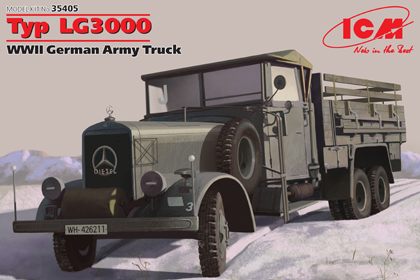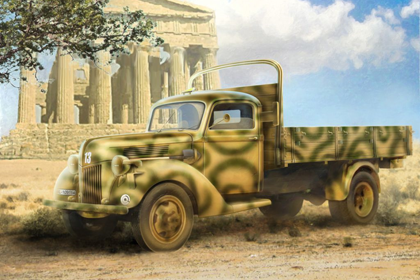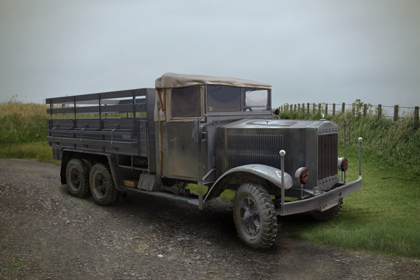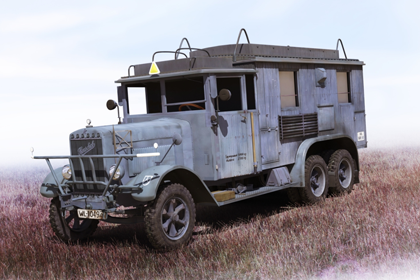This is the ICM 35451 kit in 1/35 scale, of the ‘German Truck, KHD S3000’.
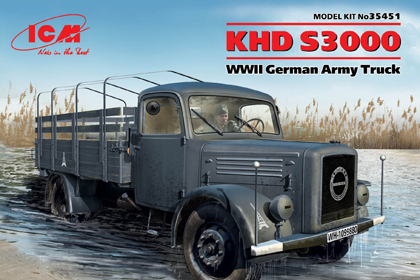
The first prototypes of the new Magirus 3 ton lorry made in 1939 were labeled Magirus S/A 330. The vehicles of the serial production started in 1940 had the name Klöckner-Deutz S/A 330. Beginning in 1941, it was changed to S/A 3000.
The Klöckner-Deutz S/A 3000 was powered by a 4 cylinder, 80 HP Deutz diesel engine. The Klöckner-Deutz S3000 lorries, with a standard box body’s were used by the Luftwaffe.
Special vehicles like fire fighting vehicle were made on the chassis of the Klöckner-Deutz S3000.
Manufacturer
Where I got it
- Stoppel Hobby (April 2016)



